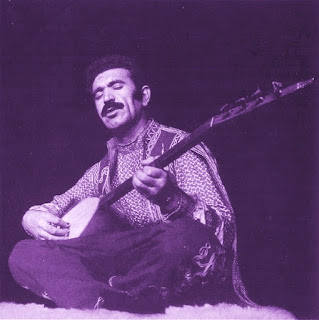One of the most important art forms in Azerbaijan, and in
that entire region, is in carpet weaving. I had mentioned carpet weaving when I
wrote on neighboring Armenia. Azerbaijani carpets do have certain style changes
that are indicative of the different eras and different regions. Different
ornamentations have different meanings in them as well. Some of the wealthier
people have had pearls and gems sewn into the carpet. Many of these carpets
were woven with silk. These carpets were not only used for practical purposes,
such as coverings for furniture or the floor, but there were also used to
decorate the walls on the home as well.
In Azerbaijan, there are different schools of carpet
weaving. There are seven, actually, that are spread throughout the country.
Each location has a slightly different style of weaving and the designs and
ornamentations used for it.
Architecture in Azerbaijan is a mixture of East and West, of
modern and ancient. There are several buildings that have been maintained since
antiquity, such as the Maiden Towers (which reminds me of Rapunzel's tower with an offshoot) and Palace of the Shirvanshahs, and many
of these are of Persian origin.
When the Russians took control of the area, you will start to see many
buildings and homes, as well as city planning, with Russian architectural
style.
Azerbaijanis also have a lot of jewelry art and handicrafts,
metal work, wood work, and stone cutting work.
Some of the oldest art is found at the Gobustan Rock Art Cultural Landscape, a collection of more than 6000 rock art drawings and cave
art found. This area has been
counted as a UNESCO World Heritage Site.
The earliest forms of Azerbaijani literature are in the form
of poetry, more specifically a ghazal (a type of poetry consisting of rhyming
couplets and refrains). The early forms are closer in style to Persian and
Turkish styles. One of the most notable
lyrical poets is a woman by the name of Khurshidbanu Natavan. She was from the city of Shusha in the
Karabakh region where her father was the last ruler of that area. Not only was
she popular in literary circles, her family also had a big name in raising Karabakh
horses.
Another early find is the book of Dede Qorqud is a collection of twelve stories
that were copied by Oghuz nomads. It’s a set of two manuscripts that were
copied during the 16th century, but scholars have reason to believe
it may have been a little earlier.
During the 16th century, the art form called
Ashik became popular. Ashik is like a traveling, singing bard, not terribly
different from the troubadours in France and other areas of Europe around this
time. One of the popular stories that are told/sang in the Ashik style is that
of the Epic of Köroğlu, a Robin Hood-like character.
Under Soviet rule, writers (as well as other artists) who
didn’t adhere to their standards of what is acceptable often found missing,
persecuted, or even killed. However, there were some writers who did keep
writing: Mahammid Hadi, Abbas Sahhat, Huseyn Javid, Adbullah Shaig, Jafar
Jabbarly, Mikayil Mushfig. After Stalin’s death, this strictness over
censorship was slowly lifted, and writers could write freely again.
Up next: Music and Dance
Resources:
Wikipedia: “Architecture of Azerbaijan” “Folk Art of Azerbaijan”
“Khurshidbanu Natavan” “Literature of Azerbaijan”
Rock Art: http://whc.unesco.org/en/list/1076/






No comments:
Post a Comment